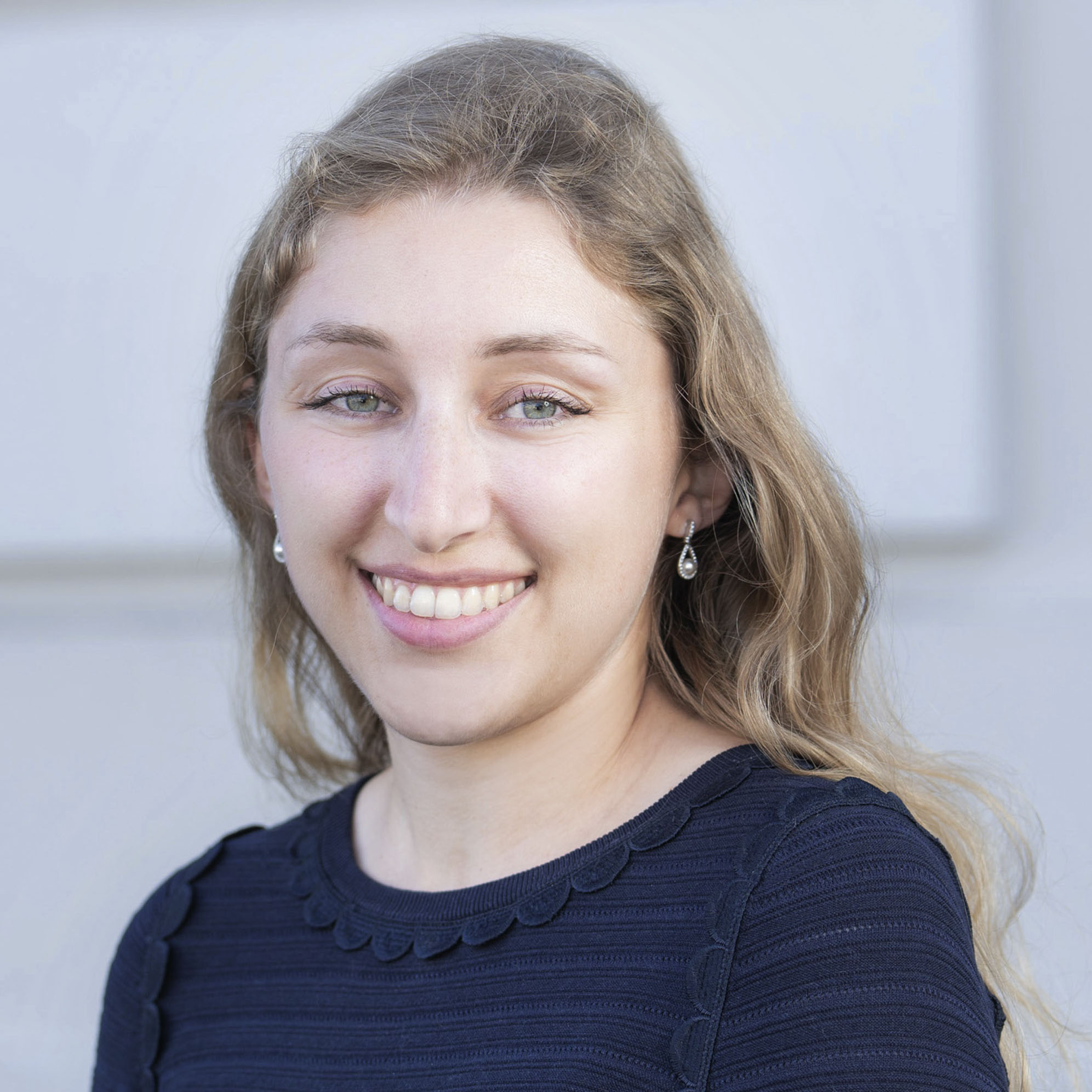
Annette Marvin
Designer
High school students don’t get much exposure to the profession of architecture, let alone engineering or construction. When I was a teen, I loved building houses in the Sims computer game. That was pretty much all I knew about architecture. Fortunately, there was an ACE Mentor Program chapter in my area. ACE is a nonprofit organization that gives high-school students the chance to really see what it’s like to design and build, guided by volunteer professionals in the architecture, construction, and engineering industries.
This was my sophomore year at Gunn High School in Palo Alto. My team met at Stoecker and Northway Architects in Palo Alto or at Palo Alto High School. Architects, engineers, and contractors spoke about their work. We built a bridge out of toothpicks—or maybe it was popsicle sticks. Working in teams, we used SketchUp to design a museum in Monterey, using a real-world project as a basis. It was eye-opening to learn what a real architect does and meet other students who were also interested in the field. Because of that experience, I decided I wanted to study architecture in college. When I saw Cal Poly was offering an intensive four-week summer workshop for high school students considering architecture as a career, I signed right up.
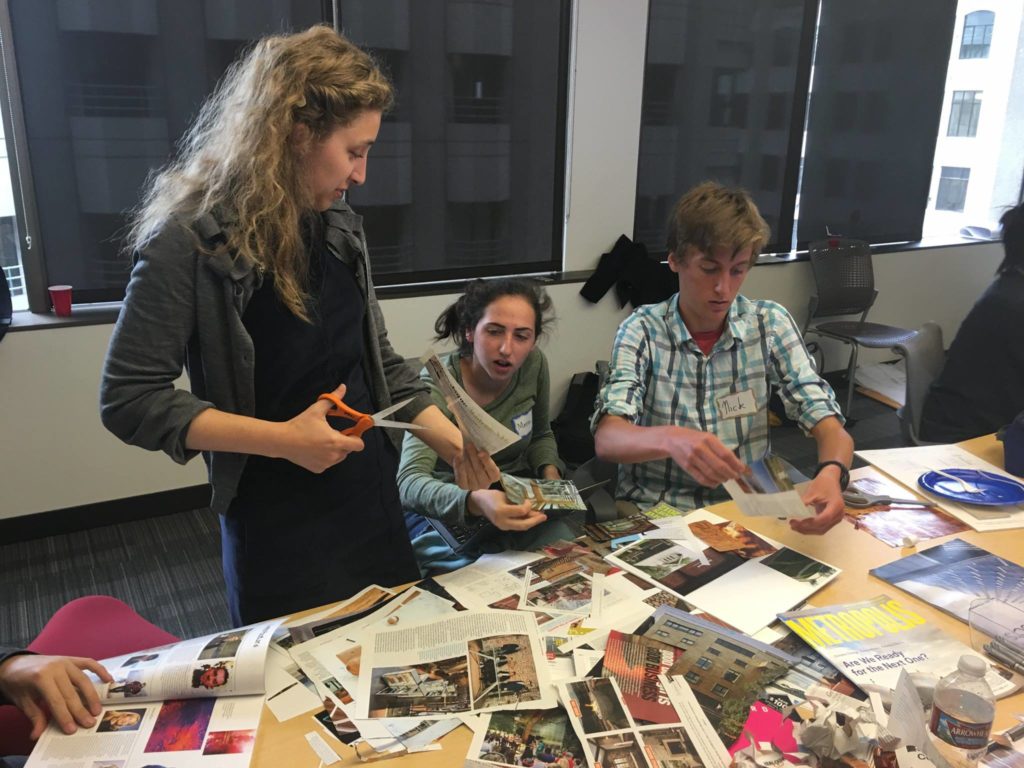
Annette and students clipping magazines for a “mood board” during the interior design session
After high school, I double-majored in architecture and French, with a minor in art history, at Washington University in St. Louis. Living in St. Louis got me interested in the preservation side of architecture. I loved the historic buildings on campus, and I couldn’t believe that so many historic buildings downtown had been torn down in the 1950s and 1960s and replaced with parking lots. That piqued my interest in adaptive reuse, making old buildings vital again, which led me, eventually, to ARG.
About a year ago, after I started working here, I saw on Facebook that there was an event for people interested in becoming a mentor in the ACE program in San Francisco. How great it would be to participate from the other side. I thought, if I can get even one kid to become an architect, it would be worth the effort.
So I joined. The program lasts 15 weeks and is held each spring. There are two teams in San Francisco. Last year, our team met at AECOM’s offices, this year we’re at Thornton Tomasetti’s. I somehow got roped in as one of the team leaders. I handle all the communications between the mentors, students, and regional leadership. Every week, I send emails to the mentors and students. It’s more work than I anticipated, but it is also really fun.
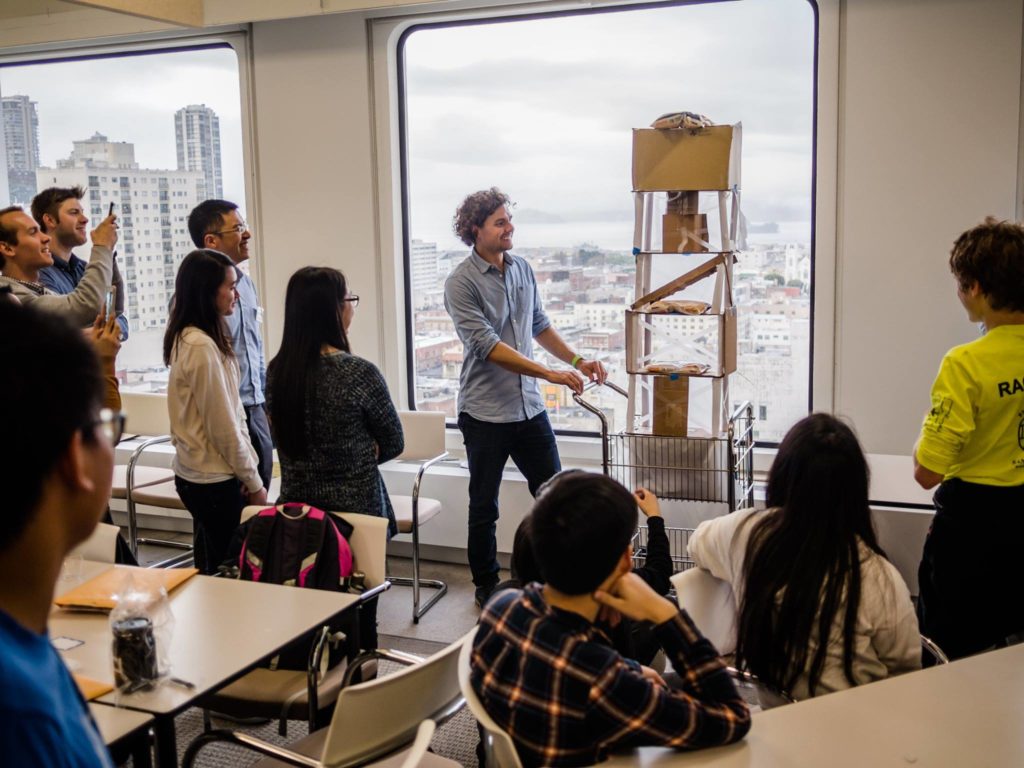
Mentor Nick doing the “Shake Test” on a tower of the students’ structural models
We have everyone from freshmen to seniors, all from schools in the city, both public and private. They work in groups of four to six students plus two dedicated mentors, going through all aspects of a real project, including a site visit, programming diagrams, floor plans, structural diagramming, sustainability, and interior design. Mentors from all three disciplines are involved to give a well-rounded and realistic approach to a project. Some students may come in thinking they want to become an architect and then decide that structural engineering is what appeals to them, or construction management. Maybe they decide the industry isn’t for them, and that’s still a success in my book.
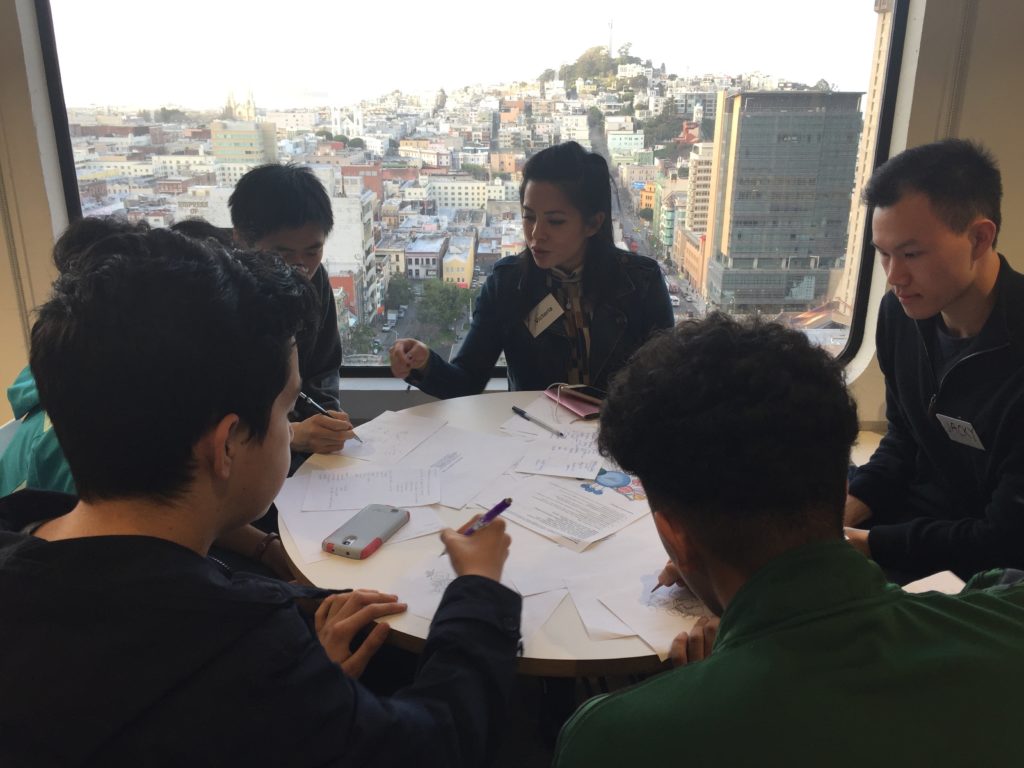
Mentor Victoria leading her small group in a programming exercise
Real-world projects provide the basis for the work. Last year, we had a mixed-use project in SoMa. The students had just heard about smart glass, which darkens to shield interiors from direct sunlight, and they used it everywhere—they got into a competition to see who could make their building the most expensive. Part of me wanted to teach them about the pragmatic side of things, but it’s important to encourage their creativity, not squelch it.
This spring, our project is on Telegraph Hill: a commercial building at the bottom of the site and a multifamily residence at the top. The groups of students are paired so that one will have responsibility for the commercial portion and one for the residential portion. They’ll have to work together and talk to each other about where the buildings go on the site and if they’re going to connect or not.
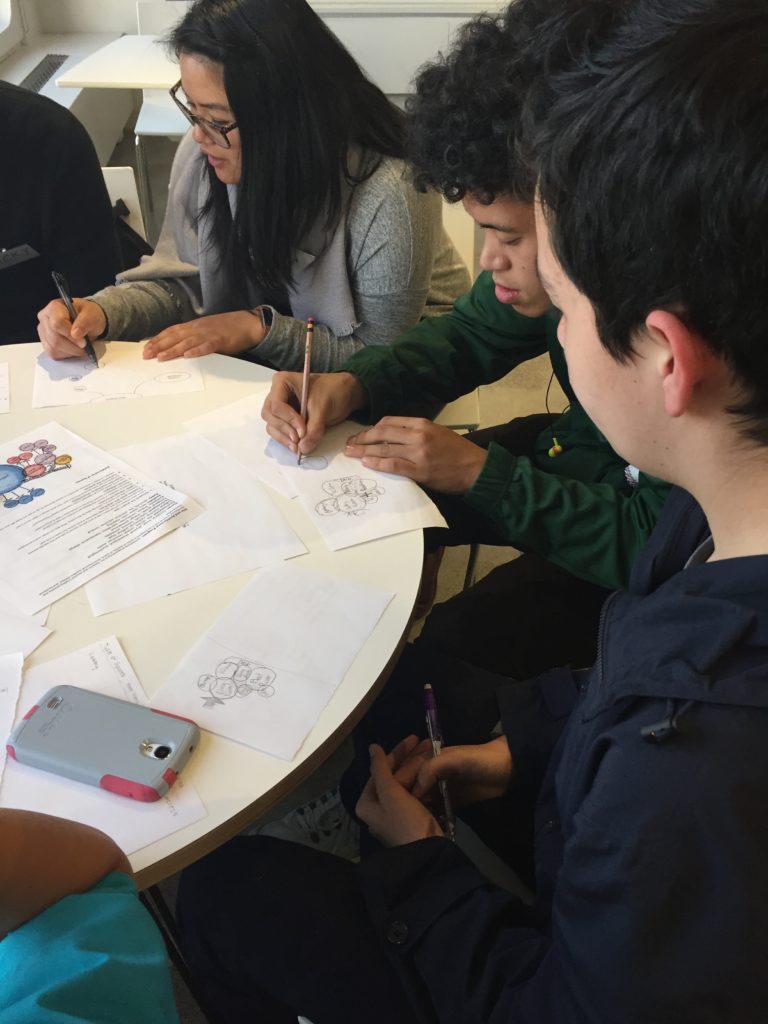
Students drawing bubble diagrams during the programming session
High school students can be shy at first. We try to get them to come out of their shells, not just teaching them about the industry, but also getting them to work in teams and strengthen their public speaking skills. We train the mentors how to keep interaction going and handle difficult situations if they arise.
I’ve been trying to recruit anyone who will listen—especially women, because we need more women mentors. I think that’s really important for the industry. We want to be more inclusive. Many of the students won’t end up going into the industry, of course, but they’ll have learned a lot of skills and sharpened their problem-solving abilities.
At the end of the year, there’s a big event. All the students make displays so they can share the projects they’ve been working on all semester. It’s like a science fair. They’re so proud of their work. It is gratifying to know I’m giving back to a program that literally shaped the course of my life.
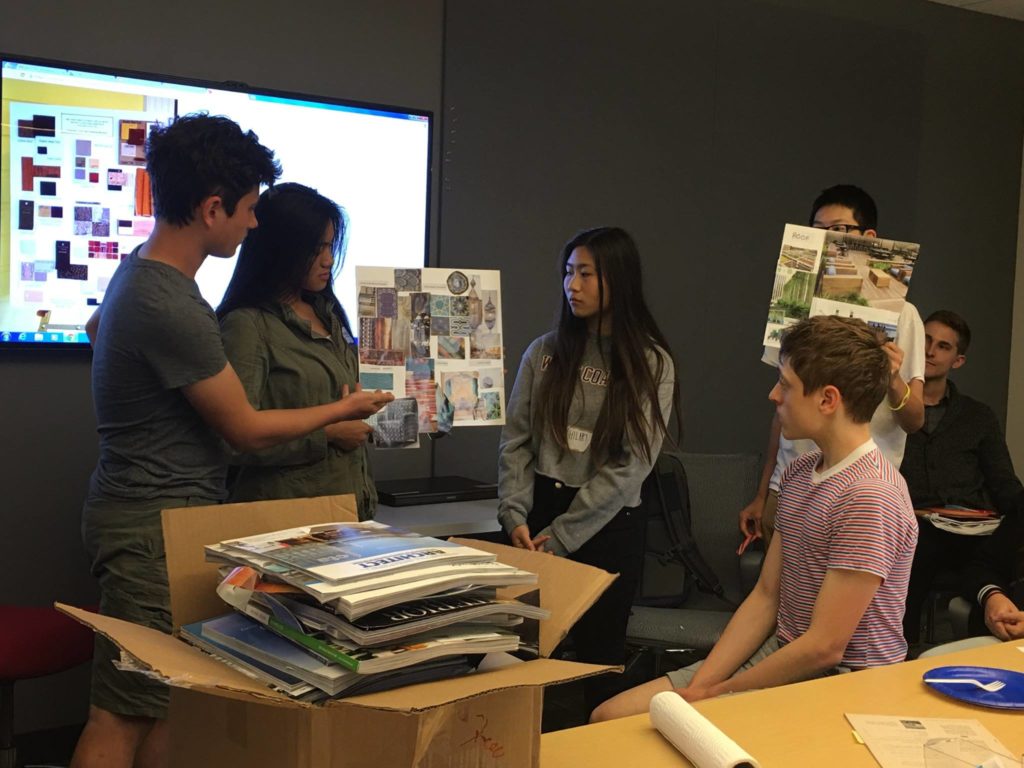
Students presenting their “mood board” during the interior design session
